|
Welcome to the Videosphere...
|
| Once upon a time....
People arose wielding half inch video cameras
with pack recorders
strapped to their sides...
They sought to document unpublished truths...
They created art...
They wanted us to open our eyes...
These sites below tell their story - enjoy!
|
|
|

Click to join Community-Activist-Art-Video-TV-History
|
|
THIS LISTSERV IS OPEN TO ANY THAT WORKED IN
EARLY
VIDEO OR THOSE THAT WISH TO LEARN THE HISTORY OF IT.
Click the above image page to sign up to the Yahoo Groups LISTSERV.
Tell us briefly on your application some of your background in early
video. Please also make sure we have your email address and website also. -
Many Thanks! |
| |
|
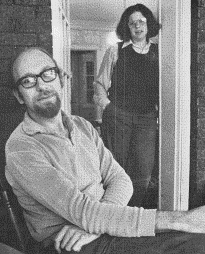
|
Kaye
Miller and the
text of
what was to have been
Radical Software #6
|
|
|
Unearthing
Chicago's underground video
scene
Articles about....
Tom
Weinberg
Tedwilliam Theodore Dan
Sandin
Anda Korsts
Kaye Miller Phil Morton
Dave Affelder - Hum Video
A unique old article from Hyde-Parker Magazine form 1973...
|
|
|
|
Alternative Television:
A Short History of Early Video Activism in Chicago
©Sara Chapman
Learn about....
Alternative Television, A Short History of Early Video Activism in Chicago, Sara Chapman,
Judy Hoffman , Process art, earth art, conceptual art, performance art, Jim
Morrissette, Sony Portapak, Tedwilliam Theodore, independent videomakers,
TVTV, Republican &Democratic, National Conventions, 1972, Guerrilla Television, Shamberg ,cybernetic guerrilla
communications, Chicago Videomaking, Video groups, University of Illinois at Chicago
(UIC), the Media Production Center, Jerry Temaner, documentary film collective, Kartemquin
Films, Videopolis, Anda Korsts, WBBM, ( Freestyle Video Journalism, Judy Hoffman, Lilly Ollinger, Jack McFadden, Women Doing Video, 1973, UIC , YWCA, 37 South Wabash, ˝” video
equipment, Ron Powers, Chicago, Sun-Times, Illinois Arts Council, Chicago Imagists, 1974, Anda Korsts, Tom Weinberg,Illinois Arts Council, Studs Terkel’s, book, Working, Skip Blumberg, Videofreex, Jim Mayer, Optic Nerve, Paul Challacombe, Joel Gold, Tom Shea, ,Jim Wiseman, Terkel’s
book, Tivicon,Vidicon, It’s a Living, WTTW, Channel 11, Chicago’s, PBS, station,
Scott Jacobs, Paper Roses, Kartemquin documentary filmmaking collective,
Stanley Karter, Gordon Quinn, and Jerry Temaner, Judy Hoffman, Sharon Karp, Community Television Network, CTVN, Denise Zaccardi ,
Lily Ollinger, Mary Ann, Debra Jackson, Karen Smiley, and Sandra Smiley, Mary Ann Jackson, National Film Board of Canada’s, Challenge for Change, George Stoney, Mirko
Popadic, Social Institutions, Tedwilliam Theodore, Tom Weinberg, Scott Jacobs, Chicago Editing Center, Communications for Change, National Endowment for the Arts, Irving Harris, Slices of
Chicago, Tom Finerty, Jim Morrissette, Denise Zaccardi, Woody &
Steina, Vasulka, Dee Dee Halleck, Wendy Clarke, and George Stoney, the Chicago Editing Center ,Center For New Television
,The Pop Video Test, Scott Jacobs , Tom Weinberg , Image Union, The Center for New Television, Anda Korsts, Video Notes (aka Freestyle Video Journalism), Tedwilliam Theodore, Milton Shulman, The Ravenous Eye, Michael Shamberg, Raindance, Guerrilla Television, World’s Largest TV Studio, TVTV,
Jim Morrissette, Judy Hoffman, The Hyde Parker, Center for New Television.
|
|
|
|
Amherst Community Television
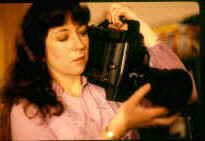
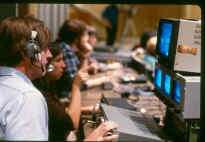
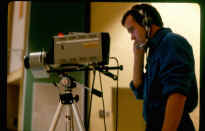
AMHERST
COMMUNITY TELEVISION (ACT) is a non-profit community service which brings
locally produced television to Amherst Mass. viewers by operating
the Amherst's cable television channel.
|
|
|
|
Dan
Berrigan Jail Release
Video Tape CLICK TO WATCH!
Dan
Berrigan Suppoed to be a die in but... is a dinner party? Can anyone tell
us more?
CLICK TO WATCH!
|
|
From http://en.wikipedia.org/wiki/Daniel_Berrigan
go there to read even more!
Daniel Berrigan was born in Virginia,
Minnesota, a Midwestern
working
class town. His father, Thomas Berrigan, was second-generation Irish-Catholic
and proud Union
man. Tom left the Catholic Church, but Berrigan remained attracted to the
Church throughout his youth. He joined a strict Jesuit
seminary
directly out of high school, where he spent the next twenty years studying
theology.
Protests against the War in Vietnam
Berrigan, his brother Philip,
and the famed Trappist
monk Thomas
Merton founded an interfaith coalition against the Vietnam
War, and wrote letters to major newspapers arguing for an end to the
war.
In 1969, Philip Berrigan was arrested for non-violent protest and
sentenced to six years in prison. Afterwards, Daniel Berrigan seriously
considered taking more direct action against the war. Howard
Zinn, professor emeritus at Boston
University, invited Berrigan to accompany him on a trip to Hanoi
to negotiate the release of three U.S.
pilots held prisoner by the North
Vietnamese. Although the mission had a high chance of success, it was
opposed by the FBI
on the grounds that it violated their policy of non-negotiation with North
Vietnam. J.
Edgar Hoover went so far as to publicly call Zinn and Berrigan
"traitors". U.S. planes even bombed locations where they were
scheduled to be. Despite the opposition, three pilots were returned home.
They were the first American POWs
released unharmed by the North Vietnamese. The lack of acknowledgement and
appreciation by the U.S. government helped to radicalize Berrigan.
In 1969, Berrigan decided to participate in a more radical non-violent
protest. A local high-school
physics
teacher
helped to concoct homemade napalm.
Nine activists, who later became known as the Catonsville
Nine, walked into the draft board of Catonsville,
Maryland,
and removed 378 draft files, which they brought outside and burned. The
Catonsville Nine, who were all Catholic, issued a statement:
"We confront the Catholic
Church, other Christian
bodies, and the synagogues of America with their silence and cowardice
in the face of our country's crimes. We are convinced that the religious
bureaucracy
in this country is racist,
is an accomplice in this war, and is hostile to the poor."
Berrigan was arrested and sentenced to three years in prison, but he
refused to serve his time. Instead, he went underground, living discreetly
among like-minded individuals. The FBI,
to its great embarrassment, was not immediately able to apprehend Berrigan,
although he frequently showed up briefly at public events, made impromptu
speeches, and went back into hiding. During this time Berrigan was also
interviewed for a documentary titled "The Holy Outlaw," by Lee
Lockwood.
Eventually, the FBI managed to find and arrest Berrigan. He was
released from prison in 1972. After his release from prison, Berrigan
spent time in France meeting with Thich
Nhat Hanh, the exiled Buddhist monk peace activist from Vietnam.
He is interviewed in the 1968 anti-Vietnam War documentary film In
the Year of the Pig.
The Plowshares Movement
On September
9, 1980,
Berrigan, his brother Philip, and six others (the "Plowshares
Eight") began the Plowshares Movement when they entered the General
Electric Nuclear Missile Re-entry Division in King
of Prussia, Pennsylvania where nose cones for the Mark 12A warheads
were made. They hammered on two nose cones, poured blood on documents and
offered prayers for peace. They were arrested and initially charged with
over ten different felony and misdemeanor counts. On April
10, 1990,
after nearly ten years of trials and appeals, the Plowshares Eight were
re-sentenced and paroled
for up to 23 and 1/2 months in consideration of time already served in
prison. Their legal battle was dramatically re-created in Emile
de Antonio's 1982 film In The King of Prussia, which starred Martin
Sheen and featured appearances by the Plowshares Eight as themselves.
Since this action over seventy Plowshares actions have taken place
around the world against weapons of war, several involving Berrigan
himself.
Other activism
Berrigan has spoken out on many issues since then, and has been
involved in many protests. He has led protests against American
destabilization of Central
America, the 1991 Gulf
War, the Kosovo
War, the U.S.
invasion of Afghanistan, and the 2003
invasion of Iraq. He is also a prominent pro-life
activist. He had been a guest speaker at Regis High School, a Jesuit
college preparatory school in Manhattan.
Further reading go to the link
http://en.wikipedia.org/wiki/Daniel_Berrigan
|
|
|
|
|
The Radical Software Web Site is a joint project of the
Daniel Langlois Foundation of Montreal, and Davidson Gigliotti
Formerly of VIDEOFREEX) and
Ira Schneider (Formerly of RAINDANCE).
Thanks to the efforts and hard work
of these folks you can view the contents of the magazines
online!
Click on any of the pictures or the
direction link ... visit the site... learn the history... read
the publication presented for you in PDF format... Indeed a
unique piece of American Media History - Ed Sharpe
The historic video magazine Radical Software was started by
Beryl Korot, Phyllis Gershuny, and Ira Schneider and first appeared in
Spring of 1970, soon after low-cost portable video equipment became
available to artists and other potential videomakers. Though scholarly
works on video art history often refer to Radical Software, there
are few places where scholars can review its contents.
The Southwest Museum of Communications and Computation (SMECC) is
just 4 issues away from a complete set! if you have any duplicate issues
please let us know.
CLICK
HERE TO GO TO THE RADICAL SOFTWARE WEB SITE - COMPLETE COPIES
IN PDF FORMAT FOR YOUR ENJOYMENT AND RESEARCH!
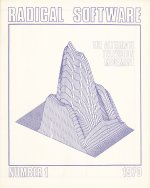 |
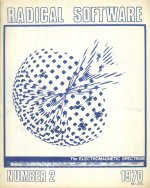 |
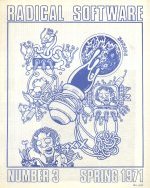 |
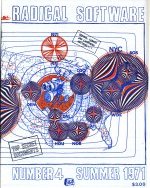 |
| Vol. I, no. 1 |
Vol. I, no. 2 |
Vol. I, no. 3 |
Vol. I, no. 4 |
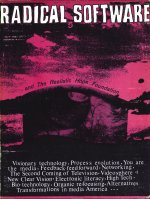 |
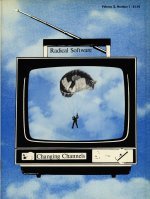 |
 |
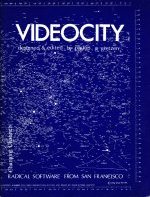 |
| Vol. I, no. 5 |
Vol. II, no. 1 |
Vol. II, no. 2 |
Vol. II, no. 3 |
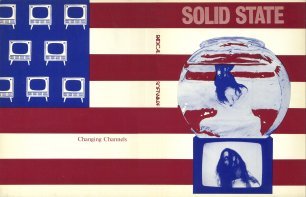 |
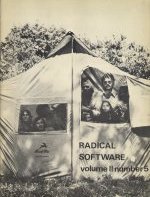 |
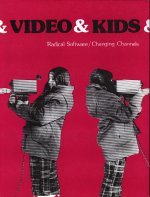 |
| Vol. II, no. 4 |
Vol. II, no. 5 |
Vol. II, no. 6 |
|
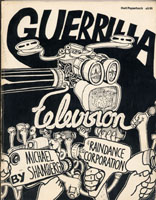 |
This issue was designated Vol. I, Number 6
of Radical Software, although it appeared on the street before
Number 5. It was unique as it was sold though standard books stores
rather than by subscription. It also was a money maker for the
group! |
|
CLICK
HERE TO GO TO THE RADICAL SOFTWARE WEB SITE -
COMPLETE COPIES
IN PDF FORMAT FOR YOUR ENJOYMENT AND RESEARCH! |
|
|
|
The
purpose of the site is to support the community of people interested in
early video with information about early video and early video art, and
current activities connected with that topic. - Davidson Gigliotti
|
|
|
|
Works by
Steina & Woody - The Kitchen 1971-1973 - Vasulka Archive
|
| |
|
Experimental
Television Video History Project
|
The
Experimental Television Center’s Video History Project is
an on-going research initiative which documents video art and community
television, as it evolved in rural and urban New York State, and across
the US. Begun in 1994, the Project has several initiatives including
research, conferences and the website.
|
|
|
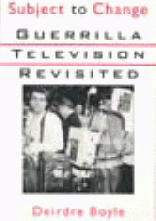 Subject
to Change: Subject
to Change:
Guerrilla Television Revisited
Boyle, Deidre
Boyle, Deirdre Oxford University Press Paperback
Overview:
Before the Internet, camcorders, and hundred-channel
cable- systems - predating the Information
Superhighway and talk of cyber-democracy - there was
guerilla television. Part of the larger alternative
media tide which swept the country in the late
sixties, guerilla television emerged when the
arrival of lightweight, affordable consumer video
equipment made it possible for ordinary people to
make their own television. Fueled both by outrage at
the day's events and by the writings of people like
Marshall McLuhan, Tom Wolfe, and Hunter S. Thompson,
the movement gained a manifesto in 1971, when
Michael Shamberg and the Raindance Corp. published
Guerilla Television. As framed in this quixotic
text, the goal of the video guerilla was nothing
less than a reshaping of the structure of
information in America. In Subject to Change, Deidre
Boyle tells the fascinating story of the first TV
generation's dream of remaking television and their
frustrated attempts at democratizing the medium.
Interweaving the narratives of three very different
video collectives from the 1970s - TVTV, Broadside
TV, and University Community Video - Boyle offers a
thought-provoking account of an earlier electronic
utopianism, one with significant implications for
today's debates over free speech, public discourse,
and the information explosion.
|
|
|
|
|
|
|
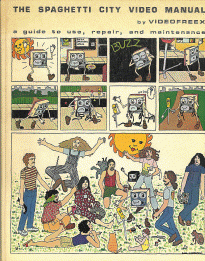
Spaghetti City Video Manual
(click on cover to see a
close up of this great cover art)
One of the most useful books if you are still
trying to use a ˝ inch machine. This book is historically interesting and
has great cover and interior artwork.
Even if you are not maintaining a ˝ inch machine
this is 'one of those books' that will give you even more insight
into the early video efforts. We, from time to time, have an extra copy at
the museum... Contact us. -Ed Sharpe archivist for SMECC
|
|
|
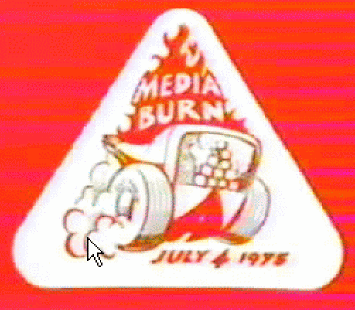 MEDIA
BURN: A video art piece examining the media, particularly Television news. MEDIA
BURN: A video art piece examining the media, particularly Television news.
On July 4, Independence Day, 1975, a "media circus" assembles at
San Francisco's Cow Palace Stadium. A pyramid of television sets are
stacked, doused with kerosene, and set ablaze. Then a modified 1959
Cadillac, piloted by two drivers who are guided only by a video monitor
between their bucket seats with the image from an Sony AVC-3400
Video camera located in the towering dorsal fin, smashes through the
pyramid destroying the TV sets.
Preceding the event are actual clips from various TV news broadcasts that
covered it (most of the TV reporters make the comment that they "didn't
get it"; coverage of the "media circus" at Cow Palace; and
a speech given by an imitator of the late President John F. Kennedy who
explains the message of Media Burn. Click the 'Media Burn" Logo to
watch this unique movie at archive.org.
NOTE: Observe the Portapak AVC-3400 camera
used in the dorsal fin of the car! Also see how many Sony AV-3400
Portapaks (AKA Video Rover II) you can spot in the duration of this
movie. Notice also the traditional media that was on site was
shooting 16mm film not any form of video back in those days. -Ed Sharpe
|
|
|
|
ACTIVIST
TELEVISION
|
|
Artists
and activists outlined their plan to decentralize television
so that the medium could be made by as well as for the
people, in the pages of Radical Software and in the
alternative movement's 1971 manifesto, Guerrilla
Television, written by Michael Shamberg and Raindance
Corporation,. These "alternative media guerrillas"
were determined to use video to create an alternative to the
aesthetically bankrupt and commercially corrupt broadcast
medium.
Earlier
in the 1960s various versions of "the
underground"--alternative political movements, cultural
revolutionaries, artists--began to search for new ways of
reaching their audience. Cable television and the
videocassette seemed to offer an answer. The movement was
assisted, perhaps inadvertently, by federal rules mandating
local origination programming and public access channels for
most cable systems. These channels provided a forum for
broadcasting community-driven production. The newly
developed videocassette allowed independent media producers
to create an informal distribution system in which they
could "bicycle" their tapes--carrying them by hand
or delivering them by mail--to other outlets throughout the
country, or even the world.
These
new forms of exhibition and distribution were accompanied by
the development of a portable consumer-grade taping system.
In 1965 the Sony Corporation decided to launch its first
major effort at marketing consumer video equipment in the
United States. The first machines were quite cumbersome, but
in 1968 Sony introduced the first truly portable video
rig--the half-inch, reel to reel CV Porta-Pak. Prior to
this, videotape equipment was cumbersome, stationary,
complex, and expensive, even though it had been used
commercially since 1956. With the new international standard
for 1/2" videotape, tapes made with one manufacturer's
portable video equipment could be played back on competing
manufacturer's equipment. In the hands of media activists
these technological innovations were used to realize radical
changes in program form and content.
Underground
video groups appeared throughout the U.S., but New York City
served as the hub of the 1960s underground scene. Prominent
early groups included the Videofreex, People's Video
Theater, Global Village, and Raindance Corporation.
Self-described as "an innovative group concerned with
the uses of video," Videofreex was the most
production-oriented of the video groups and developed a high
expertise with television hardware. In 1973 the Videofreex
published a user-friendly guide to use, repair and
maintenance of equipment titled the Spaghetti City Video
Manual. The People's Video Theater made significant
breakthroughs in community media; members used live and
taped feedback of embattled community groups to create
mini-documentaries that "spoke back to the news."
The Global Village was perhaps the most commercial of the
original groups, and initiated the first closed-circuit
video theater to showcase their work. Raindance Corporation
functioned as the counter-culture's research and development
arm; Shamberg described it as an "analogue to the Rand
Corporation--a think tank that would use videotape instead
of print." Raindance chronicled the movement by
publishing Radical Software, underground video's
chief information source and networking tool.
Top
Value Television, one of the earliest ad hoc group of
video makers, assembled in 1972 to cover political
conventions for cable TV. Equipped with porta-paks, TVTV
produced hour-long documentary tapes of the Democratic and
Republican National Conventions, providing national viewers
with an alternative vision of the American political process
and the media that cover it. Four More Years (1972), a tape
covering the Republican National Convention, was produced
with a crew of 19, and featured footage of delegate
caucuses, Young Republican rallies, cocktail parties,
antiwar demonstrations, and interviews with the press from
the convention floor. TVTV's success with its first two
documentaries for cable television attracted the interest of
public television and the group became the first group
commissioned to produce work for national broadcast on
public TV. In 1974, shortly after TVTV introduced national
audiences to guerrilla TV, the first all-color portable
video documentary was produced by the Downtown Community
Television Center (DCTV) and aired on PBS.
In
1981, the Paper Tiger Television Collective formed--a
changing group of people that came together to produce cable
programming for the public access channel in New York City.
Drawing upon the traditions of radical video, Paper Tiger
Television invented its own home-grown studio aesthetic
using rather modest resources to make revolutionary
television. Many of Paper Tiger's half-hour programs are
live studio "events," faintly reminiscent of 1960s
video "happenings." The show's hosts are
articulate critics of mainstream American media who examine
the corporate ownership, hidden agendas, and information
biases of the communications industry via the media in all
of their forms.
|
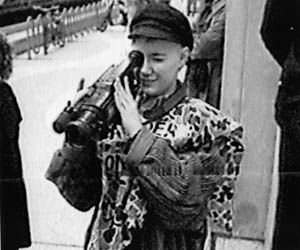
Paper Tiger Television
Photo courtesy of Paper Tiger
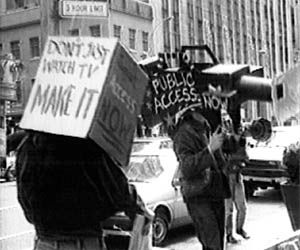
Paper
Tiger Television
Photo courtesy of Paper TIger
In
1986, Paper Tiger organized Deep Dish TV, the country's
first alternative satellite network, to distribute its
public access series to participating cable systems and
public television stations around the country. The
successful syndication of this anthology of community-made
programs on issues such as labor, housing, the farming
crisis, and racism promised a new era for alternative
documentary production.
With
a similar agenda, The 90's Channel first began
"shattering the limits of conventional TV" in
1989 as a PBS television show, and has since established
an "independent cable network" carrying blocks
of activist programming on leased access over a number of
cable systems owned by Telecommunications, Inc. (TCI),
while also bicycling its programs to public access
channels and universities around the country. The 90's
Channel programming (now known as Free Speech TV) is a
compilation of activist, community-based and experimental
media produced by independent film and video makers.
Activist
media are oriented towards action, not
contemplation--towards the present, not tradition.
Politically integrated opposition against mainstream
broadcast television by marginalized groups has considered
the form, content, and regulatory structures of the
medium. As a mode of activism, television may be used as a
occasion for media analysis and intervention, as a pathway
for the exchange of information, as well as a vehicle for
securing representation for those groups otherwise
marginalized from the media. The ultimate goal of
committed alternative video groups, however, is to secure
universal access to the tools of production and the
channels for distribution and exhibition. For these
reasons, community-based programming has not simply
followed the lead of network television, but rather served
as a forum for envisioning the future of the medium.
-Eric
Freedman
FURTHER
READING
Fabaer,
Mindy, editor. A Tool, A Weapon, A Witness: The New
Video News Crews. Chicago: Randolph Street Gallery,
1990.
Goldberg,
Kim. The Barefoot Channel. Vancouver: North Star,
1990.
Hall,
Doug, and Sally Jo Fifer, editors. Illuminating Video:
An Essential Guide to Video Art. New York: Aperture
Foundation, Inc., 1990.
Kahn,
Douglas, and Diane Neumaier, editors. Cultures in
Contention. Seattle: The Real Comet Press, 1985.
Roar!
The Paper Tiger Television Guide to Media Activism.
New York: The Paper Tiger Television Collective, 1991.
Michael
Shamberg and Raindance Corporation. Guerrilla
Television. New York: Holt, Rinehart and Winston,
1971.
Videofreex.
The Spaghetti City Video Manual: A Guide to Use, Repair
and Maintenance. New York: Praeger, 1973.
|
|
|
|
|
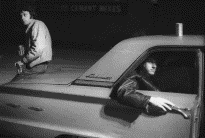
Levitt
& Vertel Stake Out
The JPG is a photo of two of my compatriots at the parking lot of a
White Castle hamburger joint in Chicago, 1972, after a video shoot of
their band. Only this image remains... Terry Moyemont
|
|
|
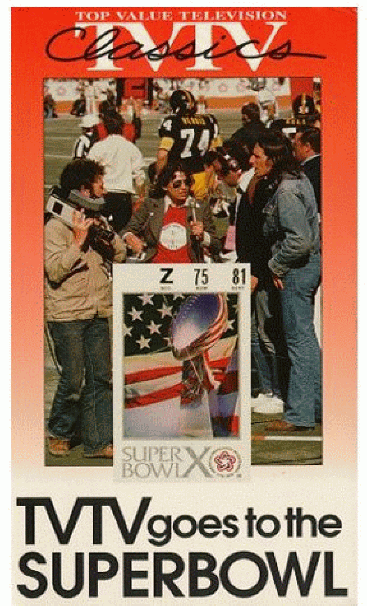
|
Allen Rucker
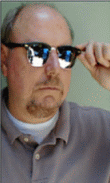
ALLEN RUCKER was
born in Wichita Falls, Texas, raised in Bartlesville, Oklahoma,
and has an MA in Communication from Stanford University, an MA in
American Culture from the University of Michigan and a BA in
English from Washington University, St. Louis.
He is the author of the New York Times bestseller, "The
Sopranos: A Family History," as well as two books with
comedian Martin Mull, "The History of White People In
America" and "A Paler Shade of White."
His next book, "The Sopranos Family Cookbook,"
comes out in September, 2002.
As a TV writer-producer, he co-founded the experimental video
group, TVTV, and has written numerous network and cable specials
and documentaries, including "The History of White People
In America," "Christopher Reeve: A Celebration
of Hope" (Emmy nominee), "CBS: The First Fifty
Years," "Penn & Teller's Sin City
Spectacular," "Big Guns Talk," a
history of the Western, and TNT's "Family Values: The Mob
& The Movies." He is also the head writer of the
official Sopranos website.
Mr. Rucker is the recipient of the duPont-Columbia Journalism
Award, the Writers Guild Annual Award, and two CableACE Awards,
among others. "The History of White People In
America" was honored by the Museum of Television &
Radio at their 2001 Paley Television Festival in Los Angeles.
Mr. Rucker also teaches in the USC School of Cinema-TV. He
lives in LA and is married, with two children.
|
|
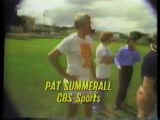
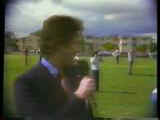 Excerpt
from a behind-the-scenes documentary about the events and personalities
surrounding Superbowl X in Miami between the Pittsburgh Steelers and the
Dallas Cowboys. Features intimate portraits of the players and the CBS
personnel who broadcast the events of Superbowl week. Produced with
multiple lightweight video cameras in TVTV style, it is both informative
and revealling of the extremes surrounding football culture and hype. Excerpt
from a behind-the-scenes documentary about the events and personalities
surrounding Superbowl X in Miami between the Pittsburgh Steelers and the
Dallas Cowboys. Features intimate portraits of the players and the CBS
personnel who broadcast the events of Superbowl week. Produced with
multiple lightweight video cameras in TVTV style, it is both informative
and revealling of the extremes surrounding football culture and hype.
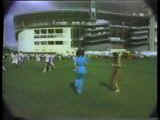 In
this clip, some ex-football players play a game for fun in their street
clothes. Bill Murray does color commentary while Christopher Guest briefly
interviews some of them. Phyllis George of CBS Sports says the game is
good, clean all-American fun. Bill Murray grills Phyllis George as Johnny
Unitas runs a pass. Murray asks her which football player she would marry,
and George claims the question is sexist. Following this moment, George is
playfully brought in the game while all of the men patronizingly let her
by. Billy Murray jokes around with Johnny Unitas, who seems like a bit of
a loveable doofus. He claims he drives Pontiacs because he likes the
Indians on the hood. In
this clip, some ex-football players play a game for fun in their street
clothes. Bill Murray does color commentary while Christopher Guest briefly
interviews some of them. Phyllis George of CBS Sports says the game is
good, clean all-American fun. Bill Murray grills Phyllis George as Johnny
Unitas runs a pass. Murray asks her which football player she would marry,
and George claims the question is sexist. Following this moment, George is
playfully brought in the game while all of the men patronizingly let her
by. Billy Murray jokes around with Johnny Unitas, who seems like a bit of
a loveable doofus. He claims he drives Pontiacs because he likes the
Indians on the hood.
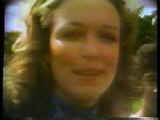 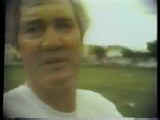
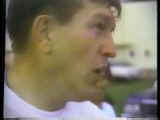
Production Company: TVTV
Audio/Visual: sound, color
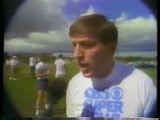
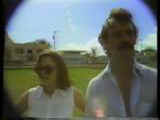 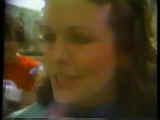
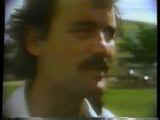
Click
here to watch a short clip.
There is also the
full VHS tape or DVD that you can find online at Amazon and other
places.....
- Actors: Bill
Murray, Lynn
Swann, Phyllis
George, Christopher
Guest
- Directors: Hudson
Marquez, Tom
Weinberg, Allen
Rucker, Michael
Shamberg, Megan
Williams
- Format: Color, Black & White, Original recording
remastered, Restored, Special Edition, NTSC
- Number of tapes: 1
- VHS Release Date: November 1, 1991
- Run Time: 60 minutes
|
|
|
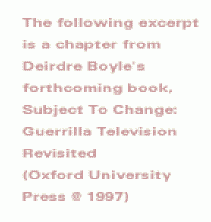 
Subject to Change: Guerrilla Television Revisited
by Deirdre Boyle,
1985, Art Journal: Video - The Reflexive Medium, No. Fall 1985
http://www.nsu.newschool.edu/Immediacy/Past%20
Immediacy/public_html/immediacy_past/boyle.htm#col_1
Michael Shamberg, Megan Williams, Abbie Hoffman
|
|
VIDEO DAYS
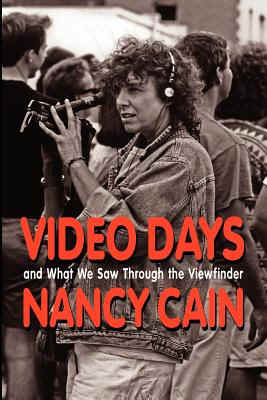 VIDEO
DAYS begins in 1969 when video technology was still virtually
unknown to the public. A portable video camera was an oddity. The
only people who had them were cops, hippies, and conceptual artist
Nam June Paik, who recorded the Popes visit to New York in 1965
using one. The cops recorded the faces of hippies at events and
political actions and the hippies loved to shoot videos of the
cops shooting video of them. When I would overhear the word video
being spoken on the street or in a restaurant somewhere, says
author Nancy Cain, I would assume people were talking about me. It
was logical. And if I turned to look, I would often see people
pointing at me and my camera and they would be smiling and waving.
Theyd want to know how much it cost, was it heavy, and what it was
for. It cost maybe $1,500; the deck and camera together weighed
about twenty pounds; and it was for adventure and freedom and
possibilities and truth. It wasnt movies or television, it was
video. Video was a rover. Video came along for the ride. Video was
immediate. It was participatory. During that summer of 1969, while
working on a pilot production for the CBS television network, I
met the Videofreex. They had just returned from the Woodstock
Festival of Peace and Love with amazing reverse angle footage that
completely changed the way I saw television and the world.
Ultimately, the network passed on our project but I stayed with
the Videofreex, and then struck out on my own. VIDEO DAYS is about
me and my camcorder, where we went together for the next thirty
years, and how television media changed as a result of this
technological revolution. Today our good old video media
revolution is history. It has been replaced by the social media
revolution, which is huge and important beyond belief, all
streaming and instantaneous, a peoples medium. And don't forget,
video is everywhere. It detonates our bombs, it watches our
babies, it belongs to us all. *Author: Cain, Nancy/ Cowles, Joseph
Robert VIDEO
DAYS begins in 1969 when video technology was still virtually
unknown to the public. A portable video camera was an oddity. The
only people who had them were cops, hippies, and conceptual artist
Nam June Paik, who recorded the Popes visit to New York in 1965
using one. The cops recorded the faces of hippies at events and
political actions and the hippies loved to shoot videos of the
cops shooting video of them. When I would overhear the word video
being spoken on the street or in a restaurant somewhere, says
author Nancy Cain, I would assume people were talking about me. It
was logical. And if I turned to look, I would often see people
pointing at me and my camera and they would be smiling and waving.
Theyd want to know how much it cost, was it heavy, and what it was
for. It cost maybe $1,500; the deck and camera together weighed
about twenty pounds; and it was for adventure and freedom and
possibilities and truth. It wasnt movies or television, it was
video. Video was a rover. Video came along for the ride. Video was
immediate. It was participatory. During that summer of 1969, while
working on a pilot production for the CBS television network, I
met the Videofreex. They had just returned from the Woodstock
Festival of Peace and Love with amazing reverse angle footage that
completely changed the way I saw television and the world.
Ultimately, the network passed on our project but I stayed with
the Videofreex, and then struck out on my own. VIDEO DAYS is about
me and my camcorder, where we went together for the next thirty
years, and how television media changed as a result of this
technological revolution. Today our good old video media
revolution is history. It has been replaced by the social media
revolution, which is huge and important beyond belief, all
streaming and instantaneous, a peoples medium. And don't forget,
video is everywhere. It detonates our bombs, it watches our
babies, it belongs to us all. *Author: Cain, Nancy/ Cowles, Joseph
Robert
|
|
|
|
|


 MEDIA
BURN: A video art piece examining the media, particularly Television news.
MEDIA
BURN: A video art piece examining the media, particularly Television news.






















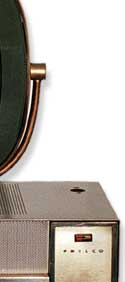

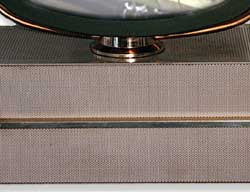

 Subject
to Change:
Subject
to Change: 



 Excerpt
from a behind-the-scenes documentary about the events and personalities
surrounding Superbowl X in Miami between the Pittsburgh Steelers and the
Dallas Cowboys. Features intimate portraits of the players and the CBS
personnel who broadcast the events of Superbowl week. Produced with
multiple lightweight video cameras in TVTV style, it is both informative
and revealling of the extremes surrounding football culture and hype.
Excerpt
from a behind-the-scenes documentary about the events and personalities
surrounding Superbowl X in Miami between the Pittsburgh Steelers and the
Dallas Cowboys. Features intimate portraits of the players and the CBS
personnel who broadcast the events of Superbowl week. Produced with
multiple lightweight video cameras in TVTV style, it is both informative
and revealling of the extremes surrounding football culture and hype. In
this clip, some ex-football players play a game for fun in their street
clothes. Bill Murray does color commentary while Christopher Guest briefly
interviews some of them. Phyllis George of CBS Sports says the game is
good, clean all-American fun. Bill Murray grills Phyllis George as Johnny
Unitas runs a pass. Murray asks her which football player she would marry,
and George claims the question is sexist. Following this moment, George is
playfully brought in the game while all of the men patronizingly let her
by. Billy Murray jokes around with Johnny Unitas, who seems like a bit of
a loveable doofus. He claims he drives Pontiacs because he likes the
Indians on the hood.
In
this clip, some ex-football players play a game for fun in their street
clothes. Bill Murray does color commentary while Christopher Guest briefly
interviews some of them. Phyllis George of CBS Sports says the game is
good, clean all-American fun. Bill Murray grills Phyllis George as Johnny
Unitas runs a pass. Murray asks her which football player she would marry,
and George claims the question is sexist. Following this moment, George is
playfully brought in the game while all of the men patronizingly let her
by. Billy Murray jokes around with Johnny Unitas, who seems like a bit of
a loveable doofus. He claims he drives Pontiacs because he likes the
Indians on the hood.






 VIDEO
DAYS begins in 1969 when video technology was still virtually
unknown to the public. A portable video camera was an oddity. The
only people who had them were cops, hippies, and conceptual artist
Nam June Paik, who recorded the Popes visit to New York in 1965
using one. The cops recorded the faces of hippies at events and
political actions and the hippies loved to shoot videos of the
cops shooting video of them. When I would overhear the word video
being spoken on the street or in a restaurant somewhere, says
author Nancy Cain, I would assume people were talking about me. It
was logical. And if I turned to look, I would often see people
pointing at me and my camera and they would be smiling and waving.
Theyd want to know how much it cost, was it heavy, and what it was
for. It cost maybe $1,500; the deck and camera together weighed
about twenty pounds; and it was for adventure and freedom and
possibilities and truth. It wasnt movies or television, it was
video. Video was a rover. Video came along for the ride. Video was
immediate. It was participatory. During that summer of 1969, while
working on a pilot production for the CBS television network, I
met the Videofreex. They had just returned from the Woodstock
Festival of Peace and Love with amazing reverse angle footage that
completely changed the way I saw television and the world.
Ultimately, the network passed on our project but I stayed with
the Videofreex, and then struck out on my own. VIDEO DAYS is about
me and my camcorder, where we went together for the next thirty
years, and how television media changed as a result of this
technological revolution. Today our good old video media
revolution is history. It has been replaced by the social media
revolution, which is huge and important beyond belief, all
streaming and instantaneous, a peoples medium. And don't forget,
video is everywhere. It detonates our bombs, it watches our
babies, it belongs to us all. *Author: Cain, Nancy/ Cowles, Joseph
Robert
VIDEO
DAYS begins in 1969 when video technology was still virtually
unknown to the public. A portable video camera was an oddity. The
only people who had them were cops, hippies, and conceptual artist
Nam June Paik, who recorded the Popes visit to New York in 1965
using one. The cops recorded the faces of hippies at events and
political actions and the hippies loved to shoot videos of the
cops shooting video of them. When I would overhear the word video
being spoken on the street or in a restaurant somewhere, says
author Nancy Cain, I would assume people were talking about me. It
was logical. And if I turned to look, I would often see people
pointing at me and my camera and they would be smiling and waving.
Theyd want to know how much it cost, was it heavy, and what it was
for. It cost maybe $1,500; the deck and camera together weighed
about twenty pounds; and it was for adventure and freedom and
possibilities and truth. It wasnt movies or television, it was
video. Video was a rover. Video came along for the ride. Video was
immediate. It was participatory. During that summer of 1969, while
working on a pilot production for the CBS television network, I
met the Videofreex. They had just returned from the Woodstock
Festival of Peace and Love with amazing reverse angle footage that
completely changed the way I saw television and the world.
Ultimately, the network passed on our project but I stayed with
the Videofreex, and then struck out on my own. VIDEO DAYS is about
me and my camcorder, where we went together for the next thirty
years, and how television media changed as a result of this
technological revolution. Today our good old video media
revolution is history. It has been replaced by the social media
revolution, which is huge and important beyond belief, all
streaming and instantaneous, a peoples medium. And don't forget,
video is everywhere. It detonates our bombs, it watches our
babies, it belongs to us all. *Author: Cain, Nancy/ Cowles, Joseph
Robert 